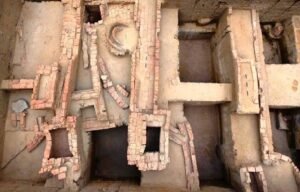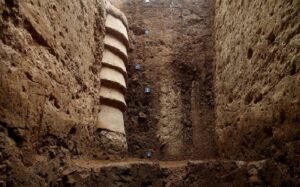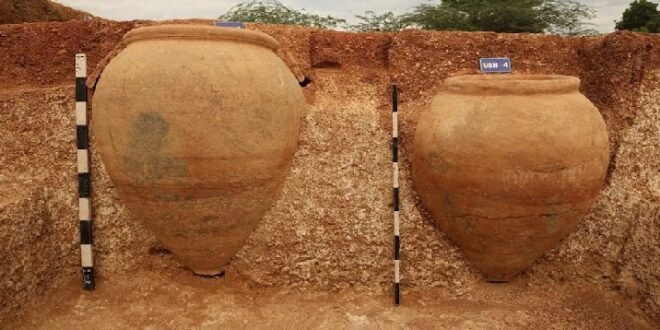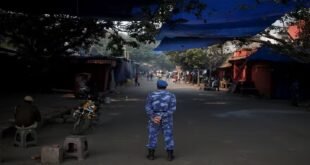29-07-2025
Bureau Report
NEW DELHI: The Keeladi village in India’s southern Tamil Nadu state has unearthed archeological finds that have sparked a political and historical battle.
Amid coconut groves, a series of 15ft (4.5m) deep trenches reveal ancient artefacts buried in layers of soil, fragments of terracotta pots, and traces of long-lost brick structures.
 Experts from the Tamil Nadu State Department of Archaeology estimate the artefacts to be 2,000 to 2,500 years old, with the oldest dating back to around 580 BCE. They say these findings challenge and reshape existing narratives about early civilization in the Indian subcontinent.
Experts from the Tamil Nadu State Department of Archaeology estimate the artefacts to be 2,000 to 2,500 years old, with the oldest dating back to around 580 BCE. They say these findings challenge and reshape existing narratives about early civilization in the Indian subcontinent.
With politicians, historians, and epigraphists weighing in, Keeladi has moved beyond archaeology, becoming a symbol of state pride and identity amid competing historical narratives.
Yet history enthusiasts say it remains one of modern India’s most compelling and accessible discoveries, offering a rare opportunity to deepen our understanding of a shared past.
Keeladi, a village 12km (7 miles) from Madurai on the banks of the Vaigai River, was one of 100 sites shortlisted for excavation by Archaeological Survey of India (ASI) archaeologist Amarnath Ramakrishnan in 2013.
He selected a 100-acre site there because of its proximity to ancient Madurai and the earlier discovery of red-and-black pottery ware by a schoolteacher in 1975.
Since 2014, 10 excavation rounds at Keeladi have uncovered over 15,000 artefacts, burial urns, coins, beads, terracotta pipes and more, from just four of the 100 marked acres. Many are now displayed in a nearby museum.
Ajay Kumar, leading the state archaeology team at Keeladi, says the key finds are elaborate brick structures and water systems, evidence of a 2,500-year-old urban settlement.
“This was a literate, urban society where people had separate spaces for habitation, burial practices and industrial work,” Kumar says, noting it’s the first large, well-defined ancient urban settlement found in southern India.
Since the Indus Valley Civilization’s discovery in the early 1900s, most efforts to trace civilization’s origins in the subcontinent have focused on northern and central India.
So, the Keeladi finds have sparked excitement across Tamil Nadu and beyond.
 William Daniel, a teacher from neighboring Kerala, said the discoveries made him feel proud about his heritage.
William Daniel, a teacher from neighboring Kerala, said the discoveries made him feel proud about his heritage.
“It gives people from the south (of India) something to feel proud about, that our civilization is just as ancient and important as the one in the north (of India),” he says. The politics surrounding Keeladi reflects a deep-rooted north-south divide, underscoring how understanding the present requires grappling with the past.
India’s first major civilization, the Indus Valley, emerged in the north and central regions between 3300 and 1300 BCE. After its decline, a second urban phase, the Vedic period, rose in the Gangetic plains, lasting until the 6th Century BCE.
This phase saw major cities, powerful kingdoms and the rise of Vedic culture, a foundation for Hinduism. As a result, urbanization in ancient India is often viewed as a northern phenomenon, with a dominant narrative that the northern Aryans “civilized” the Dravidian south. This is especially evident in the mainstream understanding of the spread of literacy.
It is believed that the Ashokan Brahmi script, found on Mauryan king Ashoka’s rock edicts in northern and central India, dating back to the 3rd Century BCE, is the predecessor of most scripts in South and Southeast Asia.
 Pressmediaofindia
Pressmediaofindia




